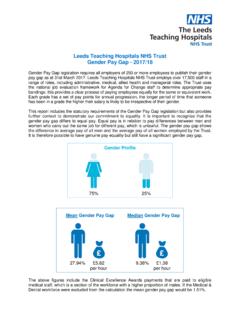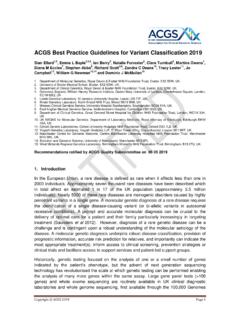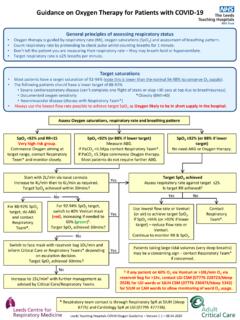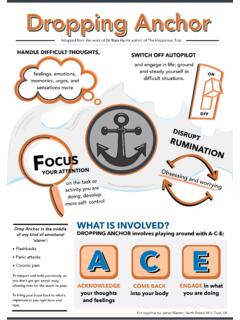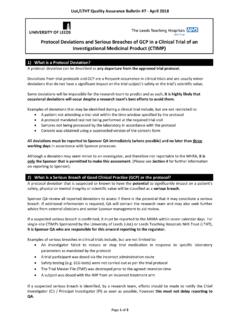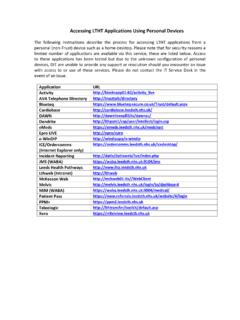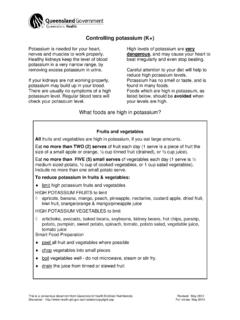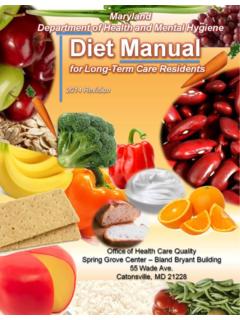Transcription of Diet Factsheet Restricted Fluids V4 - Leeds TH
1 Patient Catering Fact Sheet Restricted Fluids Factsheet v4 April 19 Page 1 of 2 What is a Fluid Restriction? A fluid restriction is when an individual is advised to take a limited amount of fluid each day. This might be recommended by the doctors to prevent fluid building up in the body, or to reduce excess fluid that is already there. This extra fluid can cause a patient to look puffy (swell around their face and ankles), cause a rapid increase in weight and increase their blood pressure. Some examples of conditions that often need a fluid restriction include: end-stage kidney disease, renal dialysis, heart failure. The amount of fluid recommended varies depending on several factors, including the patient s body size and their health conditions.
2 The Doctors will advise ward staff on the most appropriate volume of water to be taken. What Counts as a Fluid? All liquids at room temperature count towards a patient s fluid intake. This also includes some products that are classed as foods. This includes: Water Cups of tea/coffee Yogurts Ice cream Soups Gravy Milk on cereal Prescribed oral nutritional supplement drinks (eg- Fresubin Energy). The Dietitian or ward nurses will guide you if some of the above Fluids (eg- Oral nutritional supplements or milk need to be prioritised over other Fluids ). How Much Fluid is in a cup? A Patient on a fluid restriction may ask ward staff how much fluid is in a cup or jug: Water Jug: 1000ml Small Glass: 150ml Patient Catering Fact Sheet Restricted Fluids Factsheet v4 April 19 Page 2 of 2 Implications for the Ward Housekeeping Team Please take guidance from the Nurses, Doctors or Dietitians about how much fluid someone may be given.
3 They may request a specific Patient is given drinks in small mugs, half cup portions, or only half a jug of water per day. The patient may also tell you how full they would like their cup. It is often necessary for these patients to avoid salty foods, for example, bacon and ham, as they can increase thirst. These patients may have been advised to avoid soups and to choose solid foods only. This is because soups are a liquid food and therefore count towards the patient s fluid intake, but also because soups can be salty. Red lids and red Tumblers are to be used for those patients who are on fluid monitoring plans, please check with the nursing team before refilling these jugs as a clear record of fluid intake must be made by the nursing teams. If you have any concerns about a patient on a fluid restriction, please speak to the ward Nurses.
4 Small Mug: 150ml Small feeder cup with lid: 150ml Large Mug: 200ml Red tumbler & lid on water jug: for fluid monitoring
